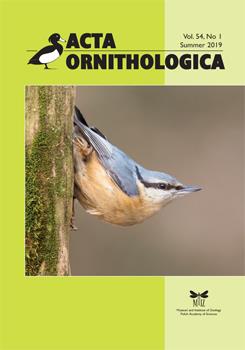The structure of a species assemblage at given sites constitutes a key ecological parameter to understand the dynamics of bird assemblages. The aim of this paper is to (1) quantify how variable is a passerine assemblage associated with an inter-tidal reedbed area at a main stopover site in the Atlantic flyway in northern Iberia and to explore potential factors explaining the variation, with emphasis on the vegetation productivity, and (2) to test whether inter-annual fluctuations reflect possible demographic trends. Migratory birds, especially those species which show high flexibility to stop over in some places or others using an opportunistic strategy, should be expected to land in larger numbers and stay for longer periods at given stopover sites in years with higher vegetation productivity, thus with a higher amount of insect prey, since this would permit achieving higher fuel deposition rates. We used ringing data collected at Txingudi marshlands during the autumn migration of 2007–2016. The assemblage had a relatively simple structure, because few species dominated in number over the rest. Reed Warblers Acrocephalus scirpaceus dominated the assemblage in nine out of ten study years, supporting the importance of the site for the species. As compared with the other two most abundant passerines (the Sedge and Willow Warblers, A. schoenobaenus and Phylloscopus trochilus, respectively), the ratio between these three warblers varied from year to year, with the Willow Warblers having much higher annual fluctuations than the other two species. This is likely linked to an opportunistic exploitation of the reed bed by this species, but we did not find significant effect of vegetation productivity (quantified by Normalized Difference Vegetation Index, NDVI) on the structure and diversity of the bird assemblage. Annual fluctuations in species' contribution to the assemblage did not vary linearly, except for the Bluethroat Luscinia svecica. Only for Bluethroats the proportion of captures and the mean number of captures declined from year to year. The structure and diversity of the assemblage did not seem to be affected by local conditions hence factors working at larger spatial scales or at the origin region of the migrants captured at Txingudi apparently may be more relevant at explaining the structural traits of the assemblage.
How to translate text using browser tools
27 August 2019
No Evidence for an Effect of Vegetation Productivity on the Structure and Diversity of a Reed-Bed Associated Passerine Assemblage during Autumn Migration
Juan Arizaga,
Estibaliz Baroja,
Miren Andueza,
Agustín Mendiburu,
Rubén Piculo,
Nere Zorrozua,
Maite Laso
ACCESS THE FULL ARTICLE

Acta Ornithologica
Vol. 54 • No. 1
August 2019
Vol. 54 • No. 1
August 2019
acrocephalus
Atlantic Flyway
bluethroat
demographic trends
stopover
Willow Warblers




